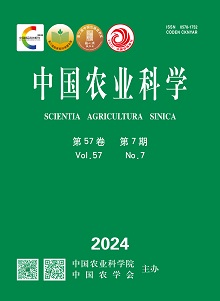【Objective】 The multivariate statistical analysis method was used to evaluate the heat-tolerance of different herbaceous peony (Paeonia lactiflora Pall.) varieties, to screen the heat-tolerance identification indexes of peony, and finally to establish a more comprehensive and reliable heat-tolerance evaluation system of peony. 【Method】 In this study, 140 peony varieties were used as materials, and field experiments were used to measure 8 morphological and structural indexes, including heat damage index, plant height, crown width, and SPAD value; at the same time, 13 physiological indexes, such as malondialdehyde and relative electrical conductivity, were measured in August after high-temperature stress in summer. Correlation analysis, subordination function method, principal component analysis, cluster analysis and stepwise regression analysis were used to comprehensively evaluate the peony heat-tolerance and to screen the identification indexes of heat-tolerance. 【Result】 There were different degrees of variation among the 21 indicators, and the variation coefficient ranged from 6.66% to 78.02%. The variation coefficient was shown as follows: Catalase (CAT)>POD>Pn>qN>SOD>stomatal density>barrier tissue thickness/sponge tissue thickness>SSC>SPC>heat damage index>SPAD>Y(Ⅱ)>b>MDA>Y(NO)>crown width>leaf thickness>plant height>REC>Fv/Fm>Hue angle (H), among which, CATwas the largest coefficient of variation, and H was the smallest coefficient of variation; through the correlation analysis of each index, it was found that X1 (heat damage index) and X2 (plant height), X3 (crown width), X4 (SPAD), X7 (Fv/Fm), X12 (leaf thickness), X17 (SSC ) were extremely significantly negatively correlated, which were significantly negatively correlated with X6 (Pn), X8 [Y(Ⅱ)], X13 (stomatal density), X20 (CAT), while they were extremely significantly positively correlated with X5 (REC), X9 [Y(NO)], X16 (MDA) and X18 (SPC). There were different degrees of correlation among the indicators, which was relatively complicated; 21 indicators were extracted into 7 principal component factors through the principal component analysis method, and the contribution rates were 20.50%, 11.66%, 8.24%, 7.24%, 7.06%, 5.31%, and 4.85%, respectively, while the cumulative contribution rate reached 64.87%; the comprehensive score (W) of 140 peony varieties were calculated by the membership function analysis method. On this basis, cluster analysis was used to classify the peony cultivars into four types of heat resistance: “excellent” “good” “medium” and “poor”. The “excellent” type accounted for 14.3%, “good” type accounted for 26.4%, “medium” type accounted for 46.4%, and “poor” type accounted for 12.9%; the stepwise regression analysis was further used to establish the optimal linear regression equation: W=0.228-0.166X1+0.002X4+0.325X7-0.257X9+0.112X10+0.00028X13+0.002X17+0.00015X19+0.001X20, and 9 indicators were selected from 21 indicators (heat damage index), including X1(heat damage index), X4 (SPAD), X7 (Fv/Fm), X9 [Y(NO)], X10 (qN), X13 (pore density), X17 (SSC), X19 (SOD), and X20 (CAT), which were used as identification peony indicators of heat-resistance. 【Conclusion】 By using multivariate statistical analysis method to evaluate the heat resistance of peony, 140 peony varieties were divided into 4 categories (excellent, good, medium, and poor). 9 indexes including heat damage index and SPAD value were screened as identification indexes of heat-resistance of peony, to quickly evaluate the heat-resistant ability of peony, thereby significantly improving the efficiency of heat-resistant identification of peony.











